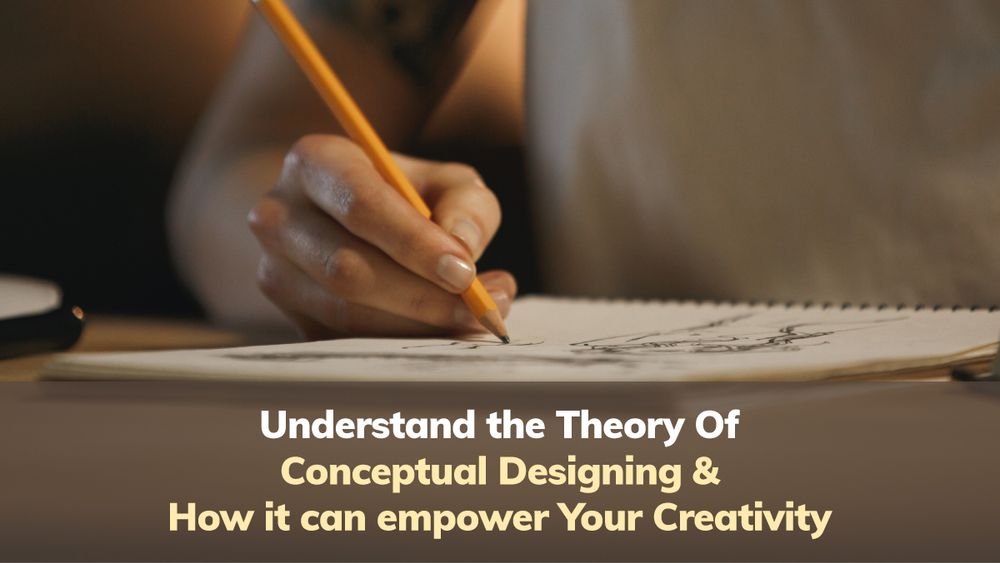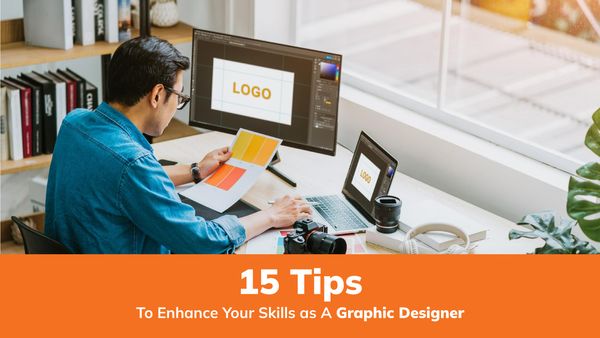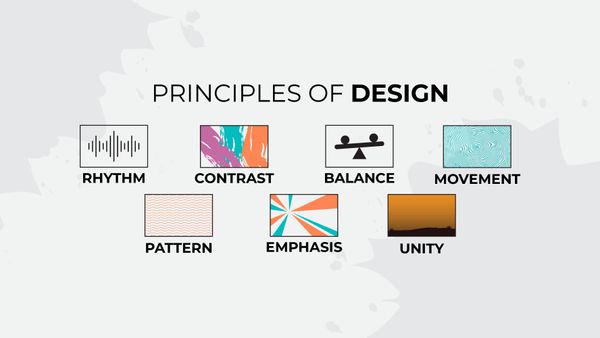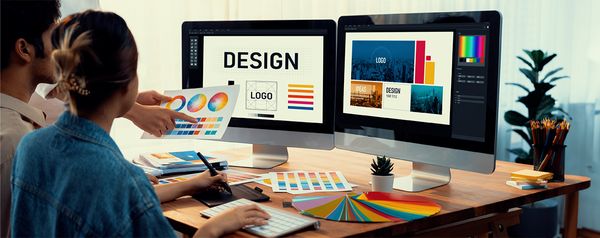Understand the Theory Of Conceptual Designing & how it can empower Your Creativity
How do you create a concept? This may seem absurd, yet visual communication (such as graphic design) relies on connotation to communicate a message. This implies that you will need a dependable method for generating a core, appealing idea early in the process to produce a successful design. Conceptual design is the term for this procedure. Are you looking for the best way to lean Adobe Photoshop to enhance your skills and learn the tips and tricks of conceptual designing? Click here.
Because conceptualization takes place in the mind, it’s possible to ignore it. However, excellent design is built based on conceptual design, and even technologically great ideas can fail if they lack a solid, supporting concept. With all this in mind, let’s get into conceptual design and how you may use it in your projects.
What is conceptual designing?
A framework for defining the fundamental idea behind a design and a strategy for how it will be conveyed visually is conceptual design.
It’s linked to the phrase “concept art,” which refers to an artwork (typically used during a film or video game) that expresses the artist’s vision for how the finished version may look. Therefore, conceptual design happens early in the design process, usually before finer specifics like color selections or illustration style.
The word “conceptual design” comes from “concept,” which refers to the designer’s idea and goal. The term “execution” contrasts with “implementation,” which refers to the final form and implementation. In short, the concept is the strategy, and the execution is the implementation. The quality of designs is frequently assessed in both of these areas: inspiration and execution. To put it another way, a critic could inquire, “What is a design trying to communicate, and how effectively does it say it?”
An essential thing to remember is that you can’t have one without the other. An unattractive visual style will confuse the message of a poorly produced design with a strong concept. Although a well-executed design with a weak idea may be attractive, it will fail to connect with viewers or represent a brand. Click on the link to get easy Photoshop tutorials for beginners.
The goal of conceptual designing
The goal of conceptual design is to offer an idea a visual form. To that purpose, the goals of conceptual design are divided into three categories:
1.To build a logical foundation
Emotion and gut instinct are often the driving forces for artistic disciplines. Designs, on the other hand, are designed to be put to use. A design must achieve something functional, such as transmitting information or representing a brand, in addition to being visually attractive, whether it is a piece of software or a logo. The artwork is grounded on the practical issues of why and how via conceptual design.
2.To develop a visual language
Designers must bridge the gap between abstract thinking and visual features because the notion is simply an idea. Design language refers to the intentional use of design components to express and elicit meaning or messages. As we previously said, the conceptual design process will not go as far as designing every aesthetic element. Still, it will establish the basis for eventual design decisions that will be important.
3. To acquire uniqueness
To acquire uniqueness, design, like any other artistic field, has a long history, with designers drawing on the ideas of those who came before them. At the very least, you should aim to stand on those giants’ shoulders. And it’s at the concept and ideation stages that unique creative ideas are most likely to emerge.
The approach of conceptual designing
Now that we know what conceptual design is and what it’s for, we can discuss how it’s done. We will break down the conceptual design process into four phases, each of which we will go through in-depth.
It’s essential to remember that you don’t have to perform these tasks in any specific order. Many designers, for instance, begin doodling without a clear idea of what they want to accomplish. It is a person’s choice to generate thoughts, and it depends on whatever aids them in thinking.
It might also be connected to how you learn best—for example if you like to learn by doing. People who understand best by taking notes may find that putting down their ideas makes it simpler to organize them. Early on, taking a more analytical approach (such as study) can occasionally limit creativity, but the reverse might lead to unintentional innovation.
Whichever order you select, we urge that you complete all of the stages to create a well-thought-out concept. Let’s get into the conceptual design process now that that’s out of the way.
Meaning
You must begin any conceptual design by determining why it is essential. What is the design’s particular purpose, and what problem is it supposed to solve?
Since problems can be complicated, defining the problem might be more difficult than it looks. A problem is frequently a symptom of more severe difficulties, and you want to get below the surface to find the source of the problem.
Here are three important step you need to follow to ace the conceptual designing:
Step 1- Research work
Designs must ultimately take up physical or virtual space in the actual world. As a result, a design concept must be based on research to comprehend the design’s environment.
This might begin with learning more about the client—who is the brand, their history and goal, and their personality? The market must also be considered. Who will be involved in the design process? It would be best to do target audience research to discover who these individuals are and what they are searching for in a design for the concept to appeal to them appropriately.
This might open up new conceptual options for you that you might not have considered before, forcing you to push your ideas further. You will want to put them all together on a mood board that you can refer to while you design.
Step- 2 Pen down your ideation
Concepts are simply thoughts or jumbled-up words in our heads. Some of the terms must be drawn out to form a notion into something solid. This stage is known as brainstorming, and it is when you will vocally explain your notion.
This may be as simple as stating the problem (see step 1) and making a list of possible remedies. Mind-mapping and free association are two word-based methods that might be useful. You usually begin with a word or phrase in each of these situations (for logos, this is typically the brand name, and for other designs, it can be based on keywords from the brief).
For instance, “freedom” might be represented by loose flowing lines or a dynamic figure posture. Finally, combine these related concepts into a whole sentence or phrase that expresses your notion and what you are attempting to accomplish. Verbal ideation helps you stay focused on your idea throughout the creative process.
Step 3- Visual ideation
Ideas should make the transition from abstract concepts to visual design at some point. Sketching is a standard method used by designers to do this. Making thumbnails, which are sketches of a small design to accommodate many on the same page, is one helpful strategy.
The objective is to develop drawings quickly, similar to brainstorming (or verbal brainstorming), so that your thoughts may flow freely. You don’t want to become overly attached to your initial sketch or spend too much time focusing on minor details. Right now, all you are doing is imagining several ways to understand the notion. It is always recommended to opt for a professional Photoshop course to upgrade your skills or learn conceptual designing in detail.
This stage is critical because, although you may believe you understand the concept, seeing it on paper is the ultimate test of whether it holds up. You might also surprise yourself with a sketch that expresses your idea more clearly than you could have imagined.
You may improve this into a much more extensive and more detailed sketch once you have got several illustrations that you like. This will result in a presentable version from which you may solicit comments.
You may improve this into a much more extensive and more detailed sketch once you have got several illustrations that you like. This will result in a presentable version from which you can solicit comments.
To conclude
The rest of the design phase is devoted to putting the concept into action. You will construct a functioning version of your design, such as a prototype or mockup, with your chosen software. After the client, test users, and other stakeholders have accepted your design. You may develop the final version. If not, explore the underlying notion using conceptual design.
Any design project’s foundation is conceptual design. As a result, it’s critical to do it correctly the first time. Developing a notion may be challenging and depressing, and you may find your rubbish bin filling up with rejected ideas over time.
But this is precisely why having a well-defined methodology like the conceptual design to assist you through the chaotic approach of coming up with new ideas is beneficial. You can refine your graphic designing skills with a Adobe Photoshop certificate with ProAlley. However, having a practical design will necessitate both a brilliant concept and a talented designer in the end.




